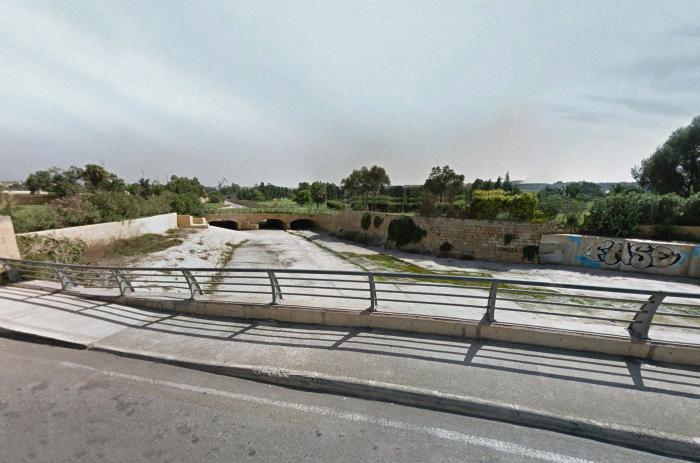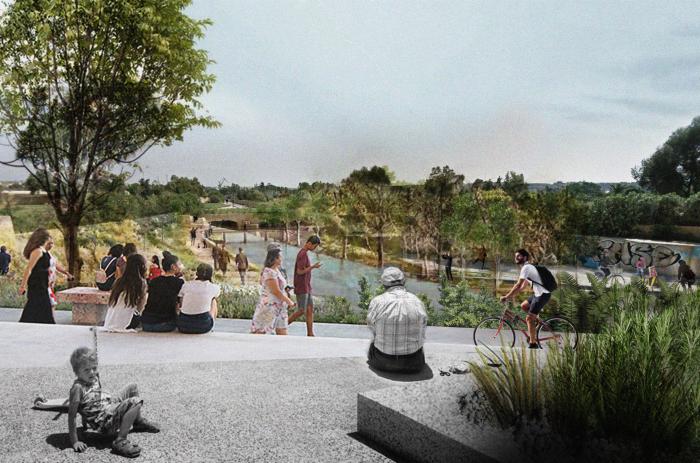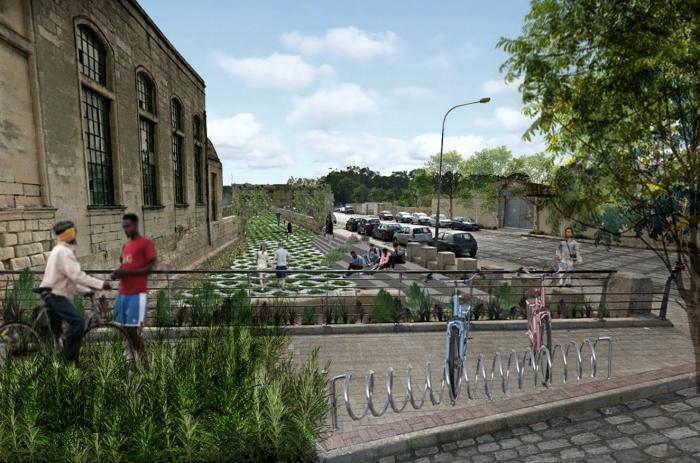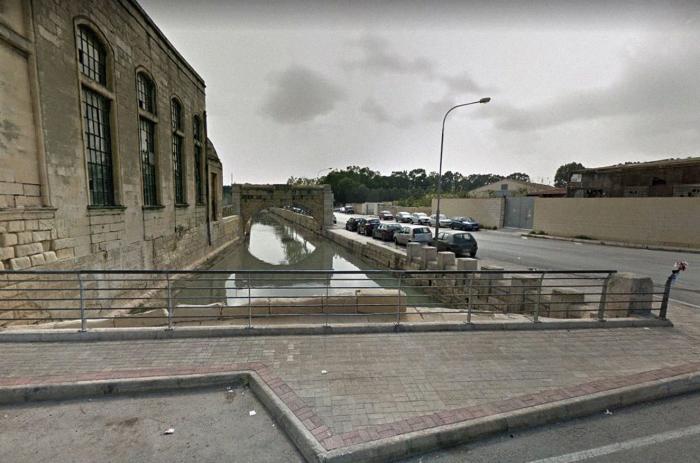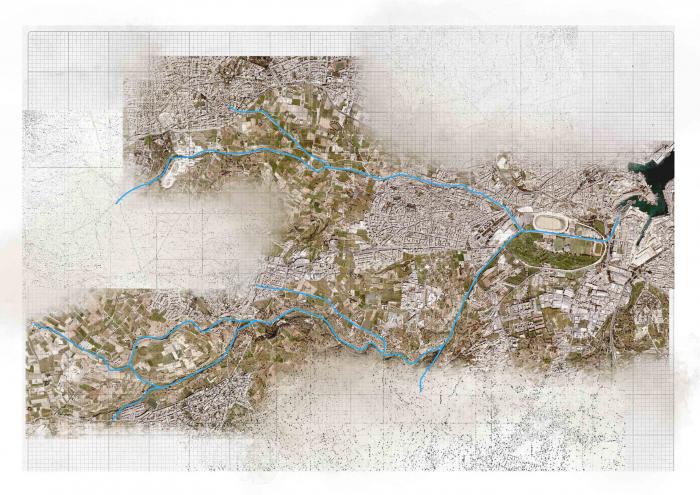I. SUMMARY INFORMATION
Project
268943
Status
Submitted
Award category
Regenerated urban and rural spaces
You want to submit
NEW EUROPEAN BAUHAUS RISING STARS : concepts or ideas submitted by young talents (aged 30 or less)
Project title
MALTA AS A WALKABLE CITY
Full concept/idea title
Malta as a walkable city by appropriating the Island’s Blue Infrastructure
Description
This proposal offers a solution to the issue of mobility through hacking an already existing local system: A large part of Malta's blue infrastructure is an extensive network of stormwater runoff systems which divert rainfall out to sea. With an average 3055 hours of sunshine annually, the infrastructure comprising this network is largely idle for a good proportion of the year. What if such runoff networks meanders people from the centre to the coastal territories and retain that precious water?
Where is your concept/idea being developed or intended to be implemented in the EU?
Malta
Malta
Marsa
Marsa
MRS
II. DESCRIPTION OF THE PROJECT
Please provide a summary of your concept/ idea
The rapid urbanisation of the Maltese Islands has led to the construction of vast road networks which prioritise vehicular movement. Pedestrian routes and cycling lanes are largely neglected and uncatered for. When present, they are sporadic and oftentimes dangerous, starting and stopping at a moments’ notice and failing to properly connect different localities. This results in the clogging of roads with traffic, impeding bus routes which offer the only source of public transit. Despite Malta’s small size, rather comparable to a European city, mobility continues to be a challenge on a daily basis. This proposal offers a solution to the issue of mobility through hacking an already existing local system: A large part of Malta's blue infrastructure is an extensive network of storm-water runoff systems which divert rainfall out to sea - a reckless strategy for an increasingly arid country. With an average 3,055 hours of sunshine annually, the infrastructure comprising this network is largely idle for a good proportion of the year. What if such runoff networks meanders people from the centre to the coastal territories and instead retains that most precious water?
Please give information about the key objectives of your concept/idea in terms of sustainability and how these would be met
Promoting the greening of Malta as a solution to the heat island effect. The limitation of space on the island increasingly results in the takeover of green areas by construction sites and hard, impermeable road surfaces. Aside from this further contributing to the necessity of storm water runoff in the first place, it also significantly contributes to raising the temperature of the island’s atmosphere, making summers even hotter than they should be naturally. Shade will be essential for offering respite from the hot sun in the proposed pedestrian and cycling routes, incentivising the greening of networks. In combining green areas with blue infrastructure, tree roots can find continued access to water supply to create lungs within the towns and villages through which the network passes, significantly cooling down the air.
Investing in blue infrastructure to serve catchment and storage of water, beyond alleviating flood prone areas by directing water runoff to the sea. This proposal can serve as an opportunity to direct attention and investment into stormwater infrastructure which filters and directs water to proper reservoirs that will store it for agricultural and community use during droughts. If implemented correctly, over time, the network can begin to prioritise human mobility, and facilitate groundwater recharge.
Please give information about the key objectives of your concept/idea in terms of aesthetics and quality of experience beyond functionality and how these would be met
Addressing climate change on a local scale. Despite Malta being a naturally arid climate, recent trends are showing it inching closer to that of a desert, leading to irreversible loss of fauna and flora and increased pressures on farmers who rely on rainfall to sustain their yield. Providing bottom-up carbon neutral solutions can aid in combating climate change and restoring the Meditarranean islands’ natural climate patterns - potentially saving the country from imminent drought and desertification.
Greening Malta existing areas that are bare and sparse. As these networks cross the island and run from town to town, the passages will automatically receive a 'greening' where green infrastructure can also be implimented. Particularly large areas may have enough space to include green areas that will act as green lungs that will beautify the otherwise dusty and sparse roadside.
Please give information about the key objectives of your concept/idea in terms of inclusion and how these would be been met
This idea can allow us to envision an alternative future for Malta. With an incremental process and implementation, small steps can have long lasting effects in improving quality of life. These are some of the benefits that could be reaped: A cultural shift towards the mindset of a walkable city through human and community empowerment. This idea provides an alternative mobility and public space network, which encourages opportunity for safe and free movement through space. By connecting isolated localities and communities, the network also facilitates real integration and exchange on a cultural level.
A real solution for decarbonisation and achieving the 15-minute city. Integrating intermodal transport that connects to this network can encourage and empower people to leave their cars behind in favour of walking or cycling. On the scale of a small island it could be possible to create multiple zones connected by a commute of no longer than 15 minutes.
Please explain the innovative character of your concept/ idea
Designing an urban toolkit to guide such appropriation through a catalogue of varied approaches applicable to different scenarios and micro contexts. The existing network of canals, bridges, underpasses, tunnels etc already connects and crosses towns and villages. By appropriating these sites the idea can lead to more productive spaces using and enhancing that which is already there. Promoting a symbiosis between nature and mobility. The approach will need to carefully study ways of adapting to the seasons and rainfall. When rainfall is heavier and the networks need to carry water, the infrastructure will have to hybridize to allow parallel mobility for people. Elevated platforms, raised cycling lanes and embankments are just a few examples of such devices that could be implemented.
Please detail the plans you have for the further development, promotion and/or implementation of your concept/idea, with a particular attention to the initiatives to be taken before May 2022
The backing of the New European Bauhaus will provide the right momentum to promote the project, get serious stakeholders interested and involved to deliver this vision. It is envisaged that a formalised masterplan stretching the length of the proposed network will need to be defined in order to organise focus groups, workshops and discussions with:
1. Community stakeholders such as the residents of certain towns and shop owners.
2. NGOs such as Din L-Art Helwa, bicycle association,water interest group, etc
3. Other creatives - Architects, ktp, artists, anthropologists, etc.
4. Local councils belonging to the areas most in need of these network links such as Marsa, Hamrun, Qormi and Birkirkara.
5. Government ministers, such as the environment minister and minister for social equity, members of the oposition.
We would also create more collaborations with other creatives or entities to contribute other skillsets. This would for example extend towards the University of Malta and it's staff and students.
III. UPLOAD PICTURES
IV. VALIDATION
By ticking this box, you declare that all the information provided in this form is factually correct, that the proposed concept/idea has not been proposed for the New European Bauhaus Rising Stars Awards more than once in the same category.
Yes
